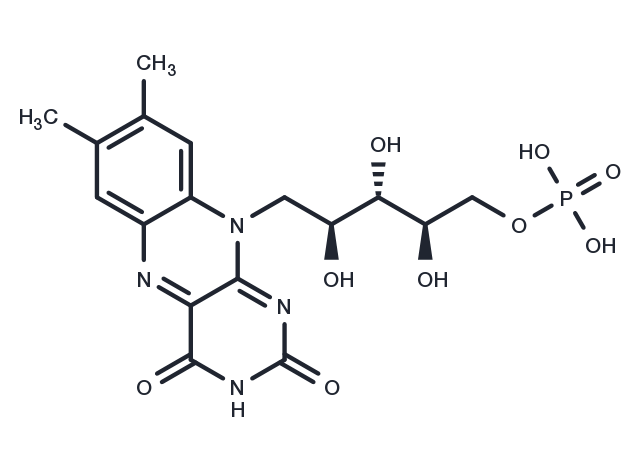store at low temperature
Powder: -20°C for 3 years | In solvent: -80°C for 1 year

Riboflavine phosphate (Flavin mononucleotide) is a derivative of Riboflavin. Riboflavin phosphate can be used to study keratoconus, corneal dilatation, and irregular astigmatism. Riboflavine phosphate is an efficient and economical recycler of NAD+.

| Pack Size | Availability | Price/USD | Quantity |
|---|---|---|---|
| 50 mg | 6-8 weeks | $ 63.00 |
| Description | Riboflavine phosphate (Flavin mononucleotide) is a derivative of Riboflavin. Riboflavin phosphate can be used to study keratoconus, corneal dilatation, and irregular astigmatism. Riboflavine phosphate is an efficient and economical recycler of NAD+. |
| In vitro | With good yields of the cyclohexanone product routinely achieved, Riboflavine phosphate (Flavin mononucleotide) is clearly a very effective NAD+-recycling agent, accompanied by high levels of NAP turnover [1]. |
| Synonyms | Riboflavine 5'-phosphate |
| Molecular Weight | 456.34 |
| Formula | C17H21N4O9P |
| CAS No. | 146-17-8 |
store at low temperature
Powder: -20°C for 3 years | In solvent: -80°C for 1 year
You can also refer to dose conversion for different animals. More
bottom
Please see Inhibitor Handling Instructions for more frequently ask questions. Topics include: how to prepare stock solutions, how to store products, and cautions on cell-based assays & animal experiments, etc.
Riboflavine phosphate 146-17-8 Metabolism Endogenous Metabolite Riboflavine Phosphate Riboflavine 5'-phosphate inhibitor inhibit
